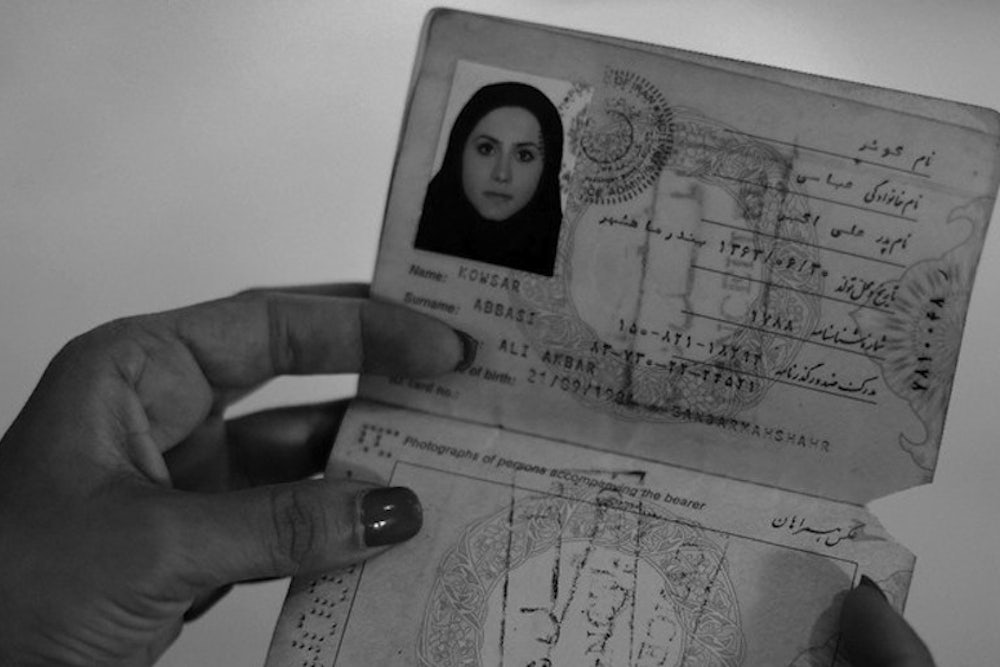Last week, a photo series of Iranian fathers and daughters garnered attention in the U.S., popping up on several online news outlets, with headlines about how the portraits challenged stereotypes and revealed the diversity of Iranian people. The photographer, Nafise Motlaq, did not expect the international recognition, but this sort of reaction is one of the main goals of her work.
When Motlaq first graduated from high school in Iran, she enrolled in a public university and got a trainee job at a Tehran newspaper. She didn’t receive much positive feedback on her writing, but the photos she took to accompany her stories would be kept and used by the paper.
Fifteen years later, she now lives in Malaysia and works as a freelance photographer and a senior lecturer at Universiti Putra Malaysia. She describes her photography as having classic narrative and documentary style, which she considers “direct and honest.” She immerses herself in a subject—individuals and groups of people—to tell a single story deeply. “I like to mingle with a person or deal with a subject for a long time,” she explains.

Motlaq has devoted much of her work to promoting an accurate portrayal of Iranian people. As an Iranian living in Malaysia, she finds herself constantly called upon as the token expert about her homeland. “I’ve been out of Iran for ten years,” she says, “and suddenly I’ve become an Iranian who has to answer so many questions about my country.”
Many of the questions she fields about Iran, she says, reveal a profound ignorance about Iranian society. “The questions are mostly based on very wrong information.” For the most part, Motlaq finds this lack of knowledge astonishing. “We live in a time where accessing news and information is very easy,” she says. “We should think about how there is this kind of ignorance despite ease of information.”
Motlaq believes that people outside Iran underestimate the similarities they may share with Iranians. “The media somehow seems to ignore the ordinary life of people,” she says. “They always focus on politics.” Her work, on the other hand, highlights the everyday elements of Iranian life that might feel familiar to people around the world. (This was part of the inspiration for her Fathers and Daughters series.) “By highlighting similarities,” she says, “people find more tolerance about their differences—and they sympathize.”

Motlaq’s work has often focused particularly on Iranian women and various women’s issues in other countries. This wasn’t something she set out to do, she says, but a pattern that developed throughout her career. She recognizes that women around the world face different challenges based on where they live, but she is passionate about portraying these women accurately, through projects such as the Islamic fashion and "I Want to Dance" series. “It’s sad that when I talk to people, I have to start with very basic information: Yes, women in Iran drive, work, and study in universities.”

Because Motlaq lives in Malaysia right now, rather than Iran, some of her photography examines subjects other than Iranian life. One of her most well-received projects focused on the commonalities between different religious groups in Malaysia. But photographing in another country, with a different language and culture, makes it difficult for her to feel like she’s doing her best work. She hopes to someday move back to Iran, after all these years away. (She initially left to continue her studies, and the offer to work as a professor has kept her away from Iran longer than she’d anticipated.)
Motlaq is realistic about how much change she can effect with her photography. “I don’t think this is going to change the world for a big number of people,” she says. But if she can correct a few misunderstandings, she says, “At least I am sure I have done something small with the ability that I have.”
